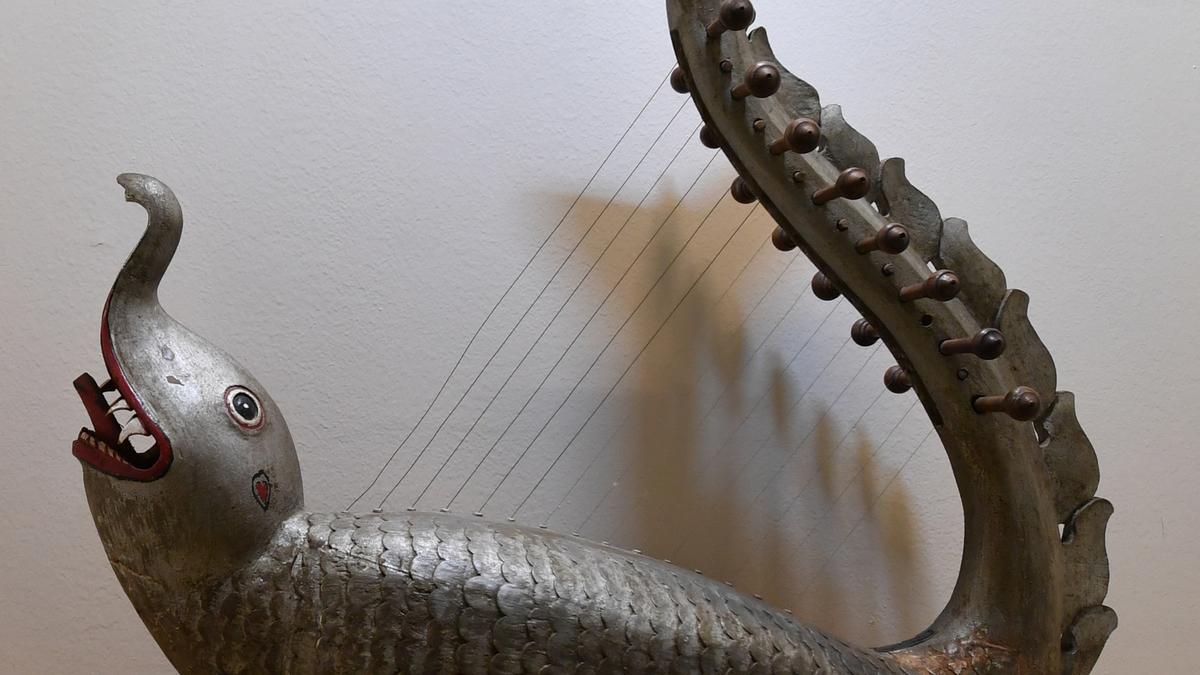
How music evolved in the land of Tamils since the Sangam era
The Hindu
How music evolved in the land of Tamils since the Sangam era
The evolution of music in Tamil Nadu makes for an interesting study. Music, derived from the popular sound and dialect of regions, had given rise to an array of Tamil music since the Sangam era.
“Each ethnic community displayed its uniqueness while interpreting, practising and passing on the art of music. The more diverse the communities, the greater the categorisation of ethnic music,” says Suvarnalatha Rao, Indian music and research scientist and programme head at the National Centre for the Performing Arts, Mumbai. Silappathikaram, the Tamil epic, has one of the earliest mentions of Tamil Isai. Emerging from the intertwining practices of Iyal (music) and Natya (dance-drama), the language took form, gained its grammatical structure and was finally used to reimagine music as an aid to drama rather than a means of practising other performative arts.
“Once the music and drama order was established by the Pandyas, who were patrons of traditional art, 103 ragas were introduced and music was given the name Pann Isai,” explains Nizhal P. Thirunavukarasu, music historian and author. Pann, meaning colour or flavour, denotes a raga and the unique mood it sets. With these 103 ragas, it is said 1,003 songs were composed by bards and poets in the Sangam era. Only 22 of them survive.
Sangam, meaning confluence, represented the coming together of music and dance or drama; vocal and instrumental music; and conventional and progressive practices. While string instruments continued to evolve, the focus gradually shifted to percussion instruments such as the Mann Parai (a drum made of clay), which continues to be used today by the tribes. “The drum, made of mud, is the inspiration behind the Mirdangam [mrit meaning mud and angam meaning limb in Sanskrit], which is popularly used as accompaniment for music performances today,” says Mr. Thirunavukarasu, who has studied the evolution of instruments in Tamil Nadu. Much before the nadaswaram and the flute came into the picture, musicians had transitioned to wind instruments with the tumbu. Bamboo plants that grew with holes in them produced melodic sounds when blown into, in a technique similar to that used on a flute. This instrument is being kept alive by the tribes in Krishnagiri and Dharmapuri, who play it on auspicious occasions and at temple festivals.
Later, musicians began using the nadaswaram extensively and it soon found its place as a prominent instrument in Tamil culture and Periya Melam music, which can be traced to the South Indian classical music.
During the 13th Century, Periya Melam musicians offered musical services to Hindu temples. This tradition is closely related to Carnatic music, and includes the nadaswaram, a percussion instrument known as Thavil, a rhythmic pattern called Thalam and an instrument to set the scale for the music, says cultural anthropologist Pathmanesan Sanmugeswaran in his conference paper Exploring the Elements of Ethnomusicology in Periya Mēlam Music in Tamil Culture.
Dr. Rama Kausalya, former principal of Thiruvaiyaru Music College, says, “We believe temple music need not always be classical and structured. For instance, Thanjavur, the hub of Carnatic music, is also known for its unique folk music sung by farmers and musicians during temple processions, even before the concert format was adapted. In fact, many communities of musicians consider Bhajan songs to be folk and not classical.” Folk art, such as Kummi and Kolattam paattu, continues to hold a prominent place among the surviving communities of folk musicians and are often sung in tandem with folk dance. “Kummi music and dance, mostly performed by women during the harvest season and the subsequent festival of Pongal, weddings, and temple festivals, are based on rhythm that is created by a series of claps that act as the thalam or metric used to achieve musical synchrony, while conveying a message by clapping or pausing at the right time,” Dr. Kausalya explains.





















 Run 3 Space | Play Space Running Game
Run 3 Space | Play Space Running Game Traffic Jam 3D | Online Racing Game
Traffic Jam 3D | Online Racing Game Duck Hunt | Play Old Classic Game
Duck Hunt | Play Old Classic Game











